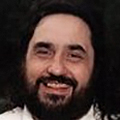Tuesday 9 May 2017 | Tutorials
- Registration and welcome coffee from 08.30
- Beginning of the Conference 09.30
- Seated Buffet 12.00.
- End of the tutorials: 16.30

Morning Session presented by
Dave Burstein,
Editor,
G.fast News
to tomorrow’s realities in the field
G.fast delivers higher speeds using more spectrum. (106-212 MHz vs 17-35 MHz for VDSL.) Higher frequencies fall off rapidly with distance. G.fast is a reliable 500-800 megabits at 100 meters but struggles to reach 300 megabits at 300 meters. Deployment cost is mostly related to how much fiber will be needed to bring the DSLAMs close. The actual G.fast equipment cost is < $100/port in very large volumes. (Examples of different carrier choices.)
09.30
What the heck is G.fast?
Introducing the Gfast map, showing who is doing what around the world, covering the basics.
Amendments 2 & 3 to the standard are aimed to increase speeds, both on short (<100 meters) and longer (300 meter) lines. Power is raised, more bits are transmitted in the same spectrum, etc. The first chips are coming from the fabs and should be available this year. The goal is a gigabit 100 meters and 300 megabits 300 meters.
Reviewing how DOCSIS 3.1 takes cable to over a gigabit both upstream and down, as well as the current state of the art in fiber. Describing the choices the competition is making, region by region.
Introducing the Gfast map, showing who is doing what around the world, covering the basics.
- Reverse power draws current from the homes rather than the telco, bringing down the cost substantially
- Fast retrain and half a dozen efficiency improvements
- Noise cancellation (vectoring) is absolutely essential
- New line coding for efficiency at higher speeds
- The ability to change the downstream/upstream ratio
Amendments 2 & 3 to the standard are aimed to increase speeds, both on short (<100 meters) and longer (300 meter) lines. Power is raised, more bits are transmitted in the same spectrum, etc. The first chips are coming from the fabs and should be available this year. The goal is a gigabit 100 meters and 300 megabits 300 meters.
Reviewing how DOCSIS 3.1 takes cable to over a gigabit both upstream and down, as well as the current state of the art in fiber. Describing the choices the competition is making, region by region.
10.30
Coffee Break
11.00
When and Where: Discussing Region by Region the Plans of each Major Carrier
Going country by country on the Gfast map, using the 15 committed deployments and the many others testing. That’s proven to be a very effective way to get to the key choices you’ll have to make.
Going country by country on the Gfast map, using the 15 committed deployments and the many others testing. That’s proven to be a very effective way to get to the key choices you’ll have to make.
12.00
Seated Buffet

Afternoon Session presented by
Hubert Mariotte,
ITU-T SG15 Vice-Chairman
14.00
Forward Error Control and Retransmission
- OLR and FRA (fast rate adaptation)
- Discontinuous operation to reduce power consumption
- Vectoring to remove far-end crosstalk
- Adjustable ratio of the bit-rates in upstream and downstream directions and dynamic time allocation
15.30
Coffee Break
16.00
Control of Frequency Range, PSD, Notching (8dBm/14bit/212MHz profile)
- Management and diagnostic functions
- Protocol adaptation, data transmission units
- Low power and link states
- Rate vs. reach performance
- Current status of implementation and trials
- High crosstalk in cables and non linear precoding
- What is next for G.fast
16.30
End of the tutorials